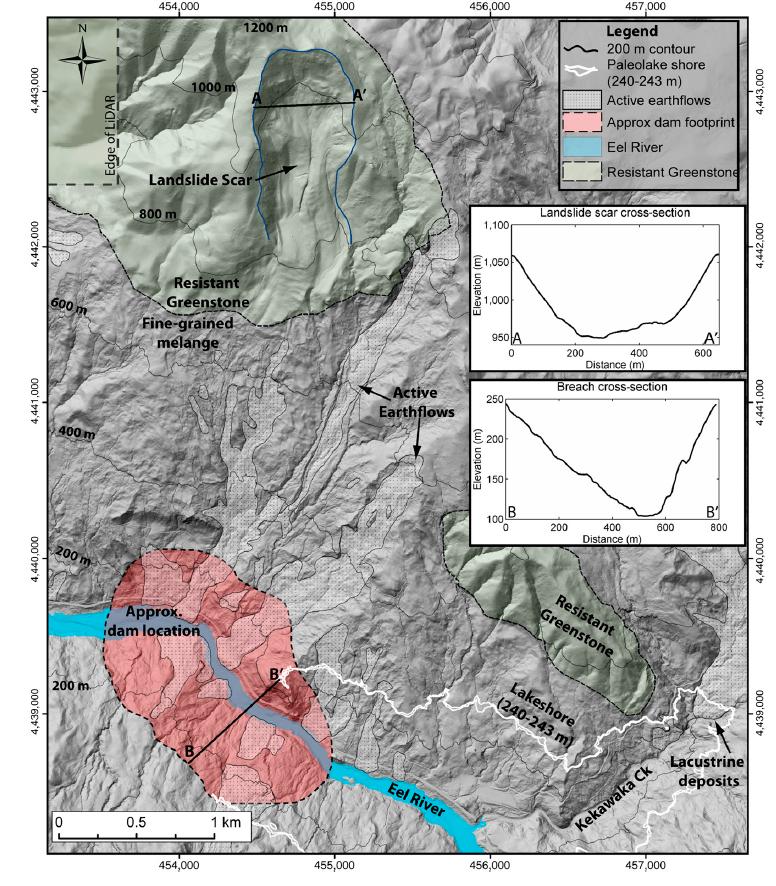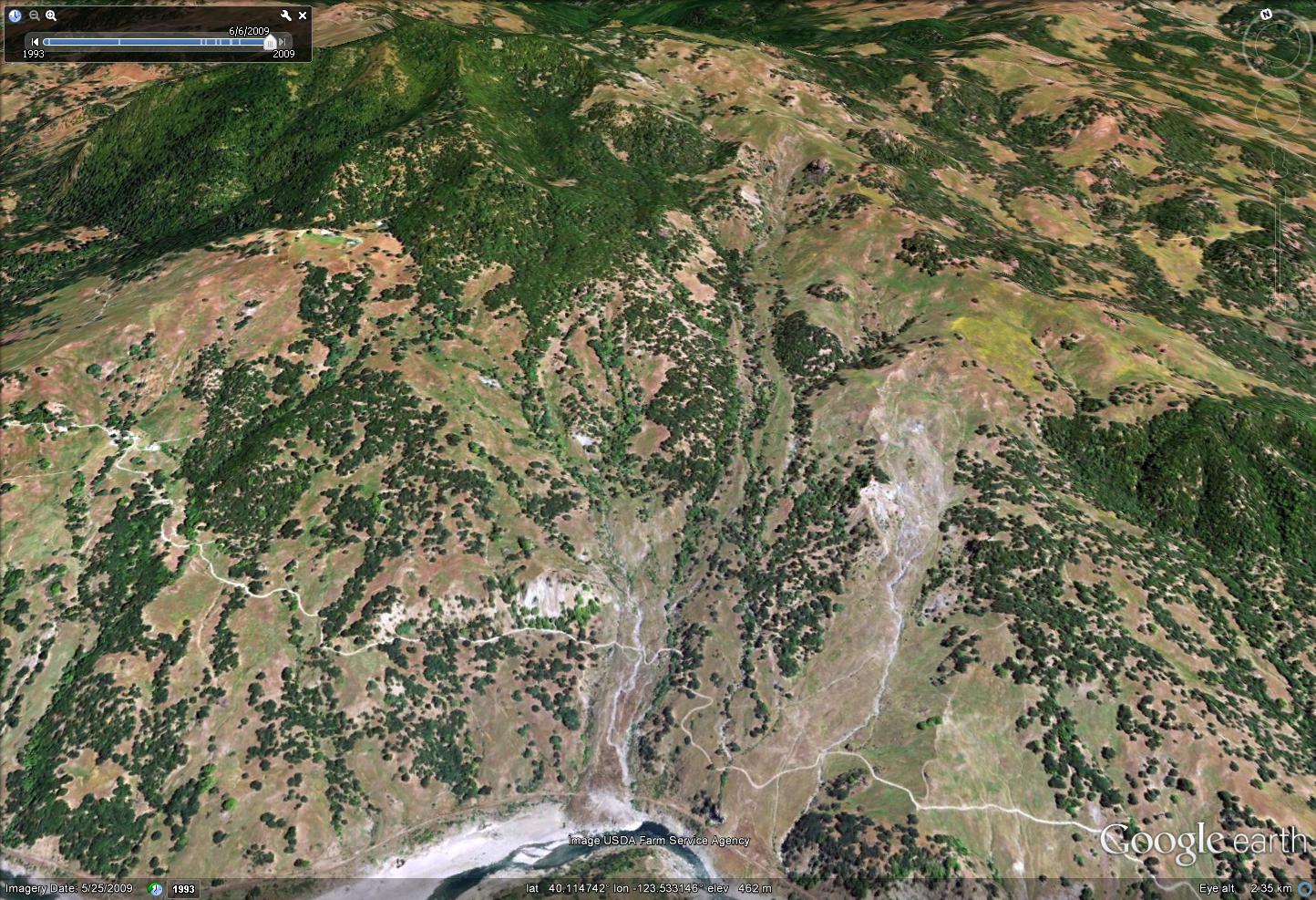15 November 2011
New paper on landslide-dams and genetic change in fish
Posted by Dave Petley
Summary: A review of a new paper that has identified a new, large, ancient landslide in northern California. The landslide dam had a surprising impact on the local fish population
A fascinating paper (Mackey et al. 2011) was published yesterday in PNAS on the role that a palaeo-landslide can play in driving genetic change in fish species. The site is located on the Eel River in northern California. Using airborne LIDAR the research team have identified a landslide scar and the remains of a landslide dam blocking the river. The LIDAR data show the landslide very clearly:
 This is an interesting case that really demonstrates the value of LIDAR data. Spotting this landslide scar from conventional imagery would be very difficult indeed, but once you know what you are looking for it is quite clear in the landscape, as shown on this Google Earth perspective view:
This is an interesting case that really demonstrates the value of LIDAR data. Spotting this landslide scar from conventional imagery would be very difficult indeed, but once you know what you are looking for it is quite clear in the landscape, as shown on this Google Earth perspective view:
The landslide is dated at between 22.6 and 25.7 ka (i.e. about 22,500 before the present), and the scar on the hillside has a volume of about 36 million cubic metres. Upstream of the landslide dam there are planar surfaces and terrace deposits that indicate that the lake trapped behind the dam at least partially filled with sediment. This gives an indication of the maximum height of the dam, even though the landslide deposit itself has been mostly removed. This comes out at about 130 m above the channel floor, whilst the deposits suggest that the resulting lake was 55 km long and had a volume of 1.3 cubic kilometres.
Based on estimates of rates of sediment delivery, the lake took between 600 and 6000 years to fill with sediment. It is not known whether the dam failed catastrophically or incrementally, but it is interesting in the context of Attabad to note that some sort of breach event did occur even after this long period. This area is of course seismically-active, so it is possible that the cause of the breach was an earthquake. The morphology of the scar, and in particular the location at the very top of the slope, might hint at earthquake triggering for the initial failure as well.
An interesting twist in this paper comes with the potential impact on the fish population. The river contains two ecotypes of anadromous Pacific Steelhead trout. Both spawn by migrating upriver, but at different times and in different locations, which means that they do not interbreed. This is common in western North America. However, in the Eel River the two species are much genetically-closer than elsewhere. The authors hypothesise that for the prolonged period in which the dam was in place, the fish had to breed below the blockage, which allowed the two ecotypes to interbreed. The resulting hybridization is exceptionally rare in the natural world.
This is an excellent paper that is well worth reading. Although not stated in the text, the implications of this research for other landslide dams, and for locations in which rivers are being blocked by manmade barrages, are clear.
Reference
Benjamin H. Mackey, Joshua J. Roering, & Michael P. Lamb (2011). Landslide-dammed paleolake perturbs marine sedimentation and drives genetic change in anadromous fish Proceedings of the National Academy of Sciences : 10.1073/pnas.1110445108



 Dave Petley is the Vice-Chancellor of the University of Hull in the United Kingdom. His blog provides commentary and analysis of landslide events occurring worldwide, including the landslides themselves, latest research, and conferences and meetings.
Dave Petley is the Vice-Chancellor of the University of Hull in the United Kingdom. His blog provides commentary and analysis of landslide events occurring worldwide, including the landslides themselves, latest research, and conferences and meetings.
Very interesting article!
But when the ecotyps come at different times into the river, the only possibility to interbreed is that they are caught inside the new lake, and not below the dam. The estimated time of a few thousend years is enough for hybridization.
Greetings from Germany!
Kai